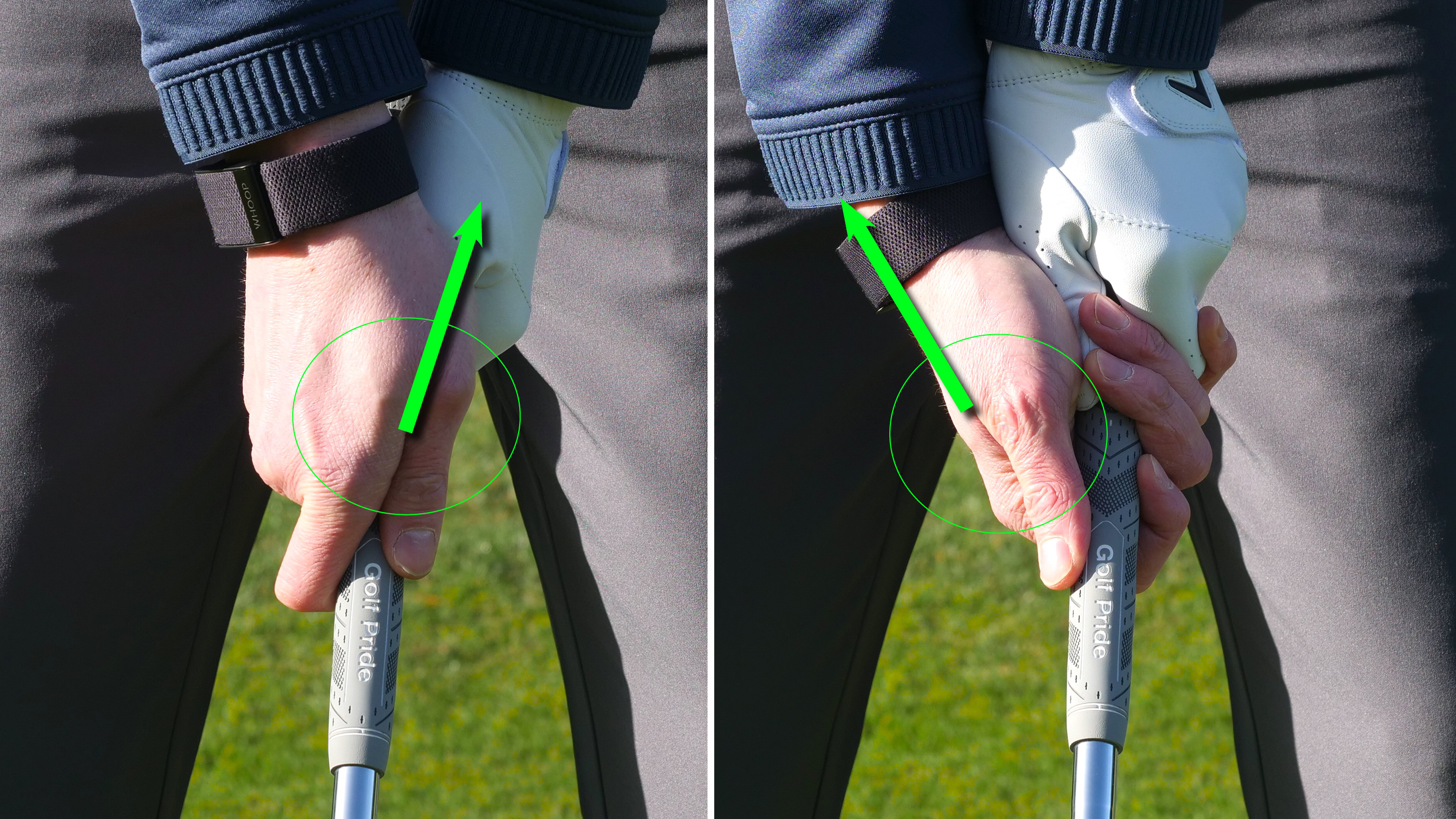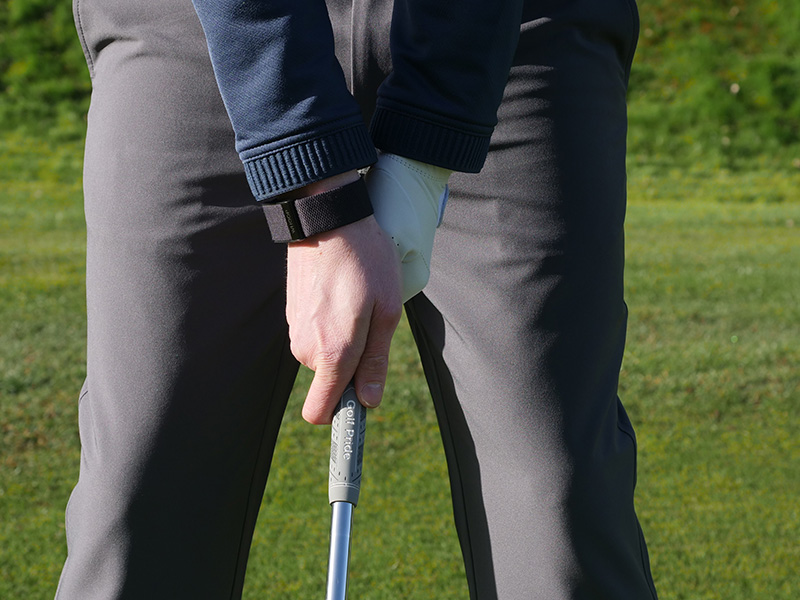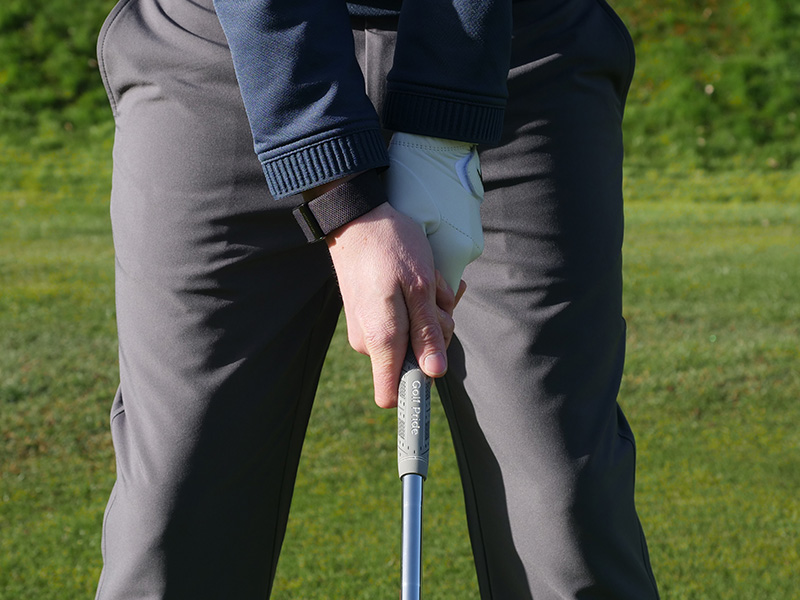Strong Vs Weak Golf Grip
Golf Monthly Top 50 Coach Ben Emerson discusses a strong vs weak golf grip, sharing some common issues and a few of his top tips


When identifying a strong vs weak golf grip, it is important to consider the implications this key area of your game can have on your performance. Many golfers are not able to reach their full potential on the course due to issues with their grip, which often result in a variety of frustrating swing faults.
In this video and article, Golf Monthly Top 50 Coach Ben Emerson discusses both strong and weak golf grips, and offers some top tips on how to make changes to this crucial area of your game...
Strong vs weak golf grip: What you need to know
Let's start with a strong golf grip. This is when both hands are too far over to the right for a right-handed golfer. This results in a closing-down effect through impact, as your hands become too active, usually causing a hook shot to the left.
Some players make it work, but more often it produces a release in the golf swing that is overly active. This promotes a level of inconsistency in the strike and the direction.

In contrast, what we see with a weak grip is the complete opposite. The golfers hands are too far over to the left, revealing too many visible knuckles on the right hand and none on the left hand. This creates a lazy release, preventing the club from squaring up properly, which leaves the face open resulting in a push shot or a slice.

For the majority of golfers, the best way to play golf to your potential is to use a neutral grip. For that, you want to see around two knuckles on each hand when you look down. What you should also notice is that a ‘V’ has formed between the index finger and thumb of your right hand and that should be pointing roughly towards your right shoulder.

However, as mentioned above, there are times when going stronger than the perfect golf grip can be beneficial. For example, if you’re someone who struggles with how to stop slicing drives, or you just generally tend to miss the majority of your shots out to the right, playing around with a slightly stronger grip might help hone the feeling of releasing the club better through impact.
Subscribe to the Golf Monthly newsletter to stay up to date with all the latest tour news, equipment news, reviews, head-to-heads and buyer’s guides from our team of experienced experts.
If you are going to try this out, proceed with caution as it is very easy to overdo it. To make changes to the grip, you should focus on small, incremental adaptions until you reach the outcome that works for you.
The same thing can apply with weakening the grip. Let’s say you’re hooking the golf ball, weakening the position of the hands can stop them from flipping over so violently approaching and through impact, which should make it easier to square the club up more effectively and consistently.
It’s worth emphasising that it’s best to experiment with these things at the driving range before heading out onto the course. So, if you’re struggling with a strong or a weak grip, hopefully some of this advice will help you get started on the path to better, more consistent golf.

Location: Sand Martins GC
Ben’s modern approach to golf coaching has seen him become one of the most sought-after coaches in the country and teaches none other than Robbie Williams. His honest, modern and fun style of coaching has help thousands of golfers of all ages and abilities and he has been coaching for over 20 years.
Advice for practice:
Start with slow, small swings. If you can’t do it small and slowly there is not a hope in hell of doing it at full speed with a full swing! In other sports such as rugby or martial arts they slow learn new moves/plays before making them at full speed.
Teaching philosophy:
‘Why guess when you can access’ Ever new student goes through a full TPI movement screen, 3D motion capture and pressure plate analysis as well as TrackMan and 2D video analysis. Coaching is based on facts and not guess work.
Most common problem:
A lack of clubface understanding and awareness. I get golfers to aim the clubface directly at the target and get them to make a slow swings and deliver the club to the ball with an open face, then repeat the same thing again but with a closed face, followed by one at the target. Giving them full awareness based on feelings errors to find a happy middle ground.